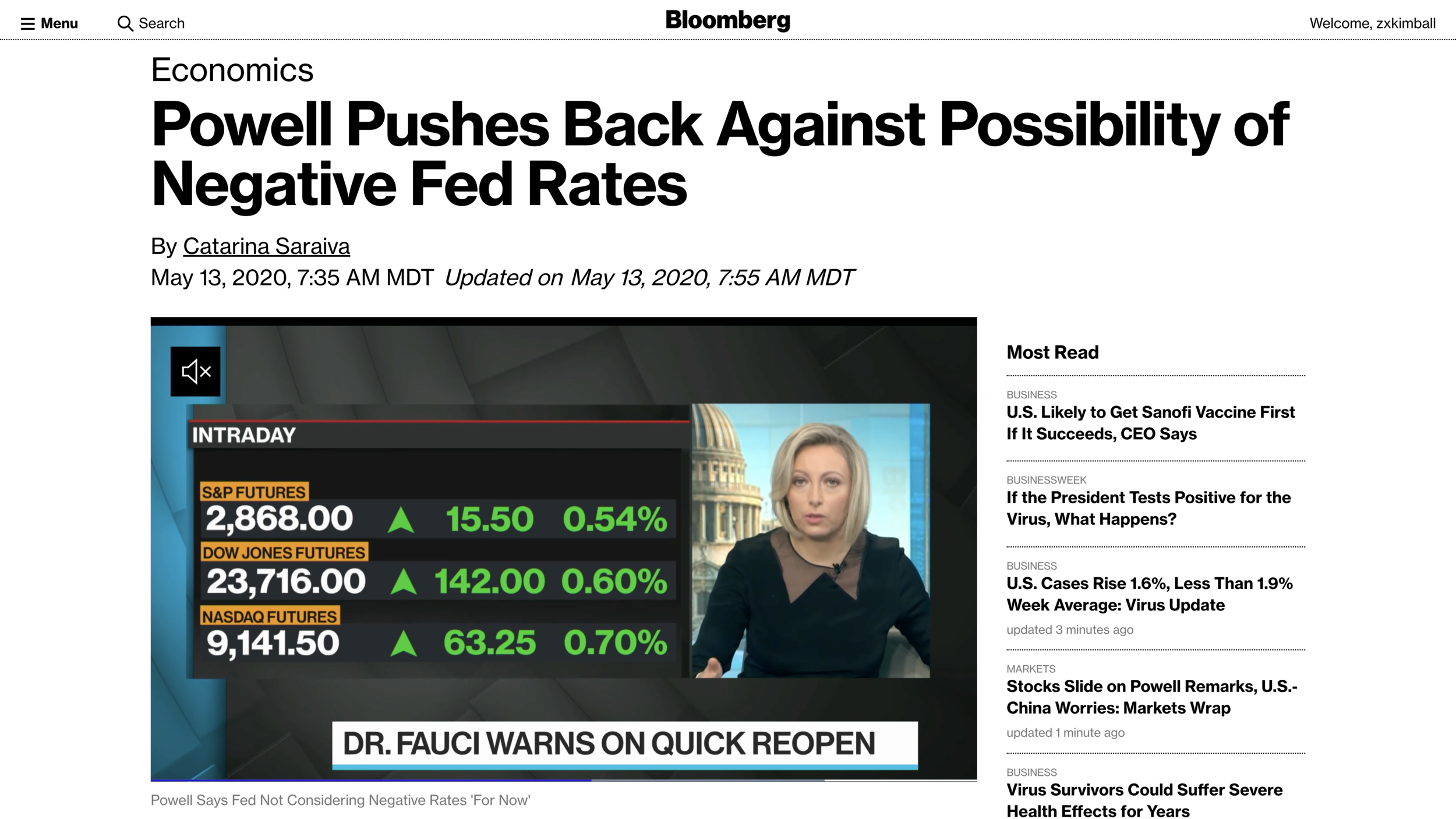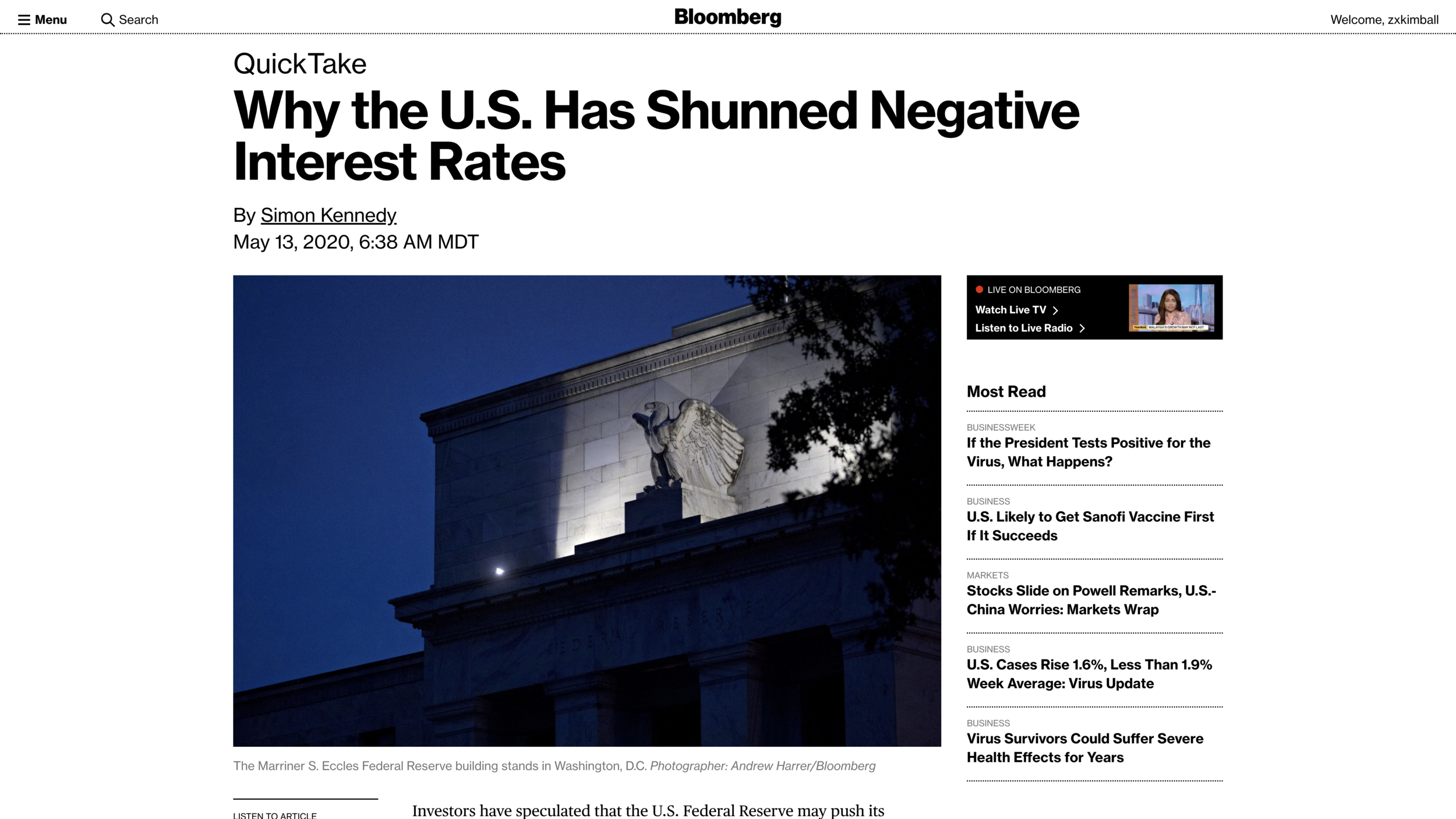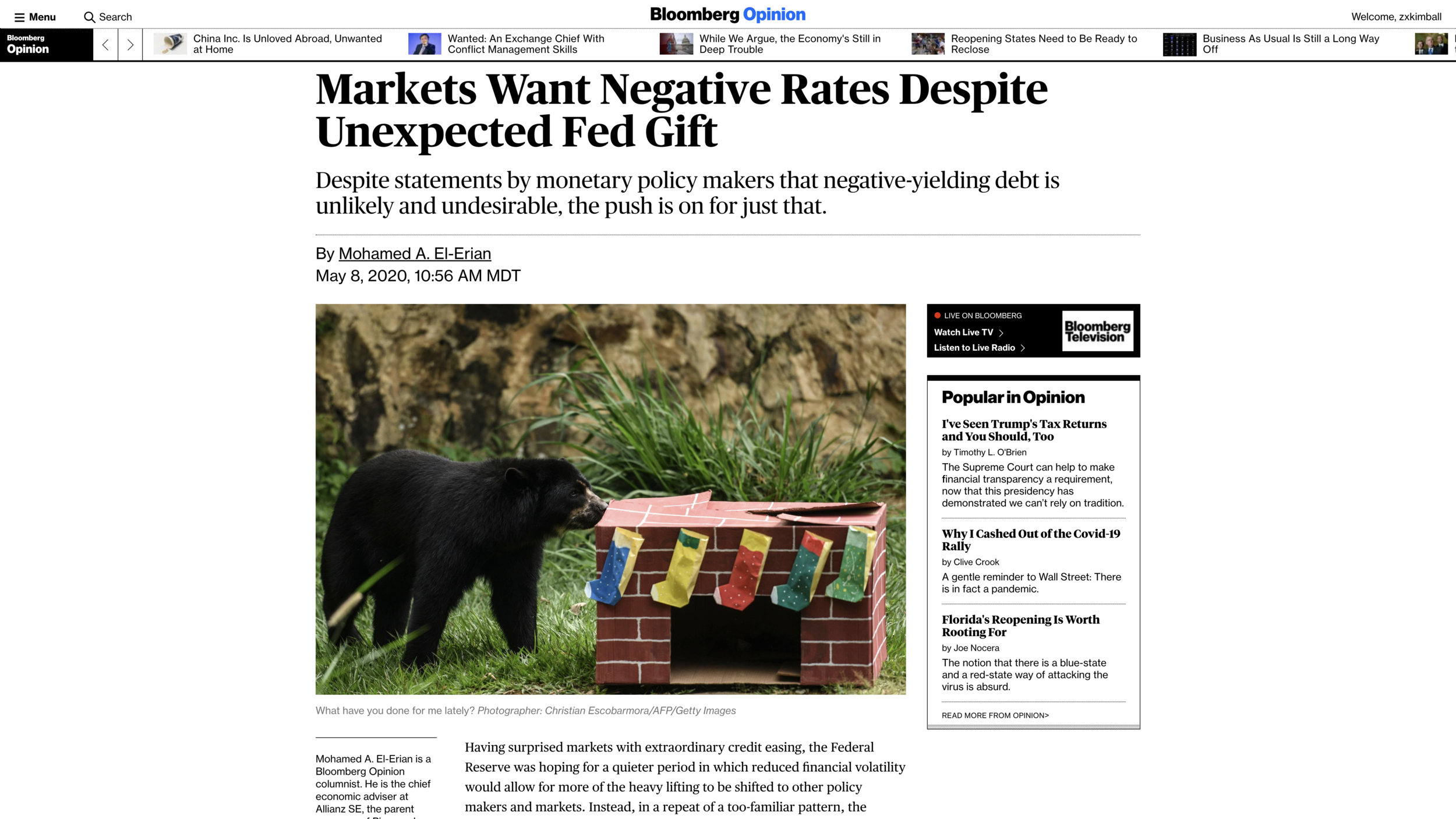Pressure on the Fed from the Market and Trump for Negative Rates
If, in its collective heart, the Fed, or more specifically the Federal Open Market Committee (FOMC) is willing to do negative rates, it may be managing the politics of negative rates by having the market and the President of the United States call for negative rates before it goes there. But if there is a genuine reluctance to use negative rates, not just now, but after the economy broadly reopens, that is a mistake—a big one. As I wrote in “The Wisdom of Jerome Powell”:
History may judge Jerome Powell in important measure on whether he is willing to use negative interest rates to get us out of the hole our economy is in some months from now. The “how” of negative interest rates is now well-worked out, the President of the United States is supportive of negative rates, and there is a clear legal path to negative rates in the United States. So there is no excuse not to use them if they are needed, as they are likely to be.
See also “Narayana Kocherlakota Advocates Negative Interest Rates Now” and “Why We are Likely to Need Strong Aggregate Demand Stimulus after Tight Social Distancing Restrictions are Over.”
Among the arguments against negative rates in the articles shown above, the worry about stress on banks I answer in “Responding to Negative Coverage of Negative Rates in the Financial Times.” Simon Kennedy’s Bloomberg article “Why the U.S. Has Shunned Negative Interest Rates” does introduce an argument I haven’t seen as often:
The risk in money markets relates to concerns that investors could start boycotting them and seek yield elsewhere. The U.S. relies on these markets -- at a size of roughly $4.8 trillion -- more than economies elsewhere. In minutes of an October Fed meeting, officials saw the risk of “significant complexity or distortions to the financial system.”
Here the problem is that we didn’t complete the financial stability fix after the 2008 financial crisis. Money market mutual funds should never, ever, ever be allowed to pretend that their shares are worth exactly $1, because that is pretending that they face no risk. This invites a panic when investors are reminded by events that there is risk in money market mutual funds. The solution is called “net-asset-value” pricing. The Fed, using its regulatory authority, needs to immediately do its utmost to discourage money market mutual funds from pretending their shares are worth exactly $1. At a minimum, it can tell money market mutual funds to have ready a substitute fund with net-asset-value pricing that investors can shift their funds into if and when money market mutual funds begin breaking the buck. There still might be a “run” on money-market mutual funds that look like they might “break the buck,” but if it is a run taking money from those funds and putting it into net-asset-value money-market funds that can already be bought at a discount, then the money market mutual fund system will still continue functioning reasonably well. At any rate, the Fed needs to immediately work on preparing money market mutual funds for the possibility of negative rates!
Addendum: See the related Twitter discussion I have with Ivan Werning and with Jay Kahn and Steve Hou.
Update: An interesting comment in a tweet:
And below is the quotation from Gandalf:
For an organized bibliography of what I have written on negative interest rate policy, see:



